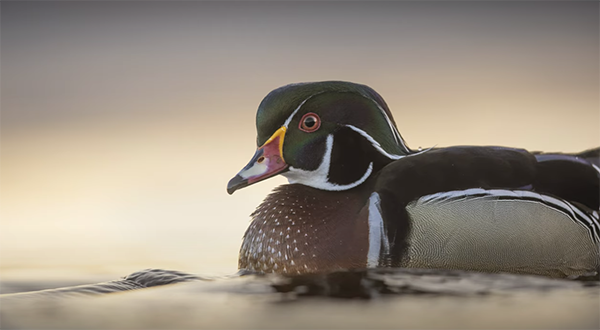Wildlife Photo Basics: Shooting Techniques, Gear, Camera Setting & More (VIDEO)
If you’re thinking about trying you hand at wildlife photography but don’t quite know where to start, the beginners guide below is just what you need. You’ll pick up some great advice from an accomplished pro that will enable you to get going this weekend.
And don’t worry that this genre of photography requires traveling to an exotic location. That’s because you can capture great images at a local nature reserve, nearby lake or stream, or even by taking a quick trip to the zoo. And if you use a long lens for photographing your kid’s sporting events, you already have what you need.
Instructor Simon d’Entremont is a notable Canadian wildlife and nature photographer based in Nova Scotia. He covers a lot of ground in this 17-minute introduction to the craft, so you may want to be prepared to jot down a few notes.

Simon explains everything from essential equipment, important camera settings like focus, metering, and exposure modes, to basic field techniques. There’s also a helpful discussion, especially for beginners, regarding where and when you’ll have the best chance of finding appropriate subjects throughout the year—no matter where you live.
The lesson kicks off with gear, and Simon says there’s really only two things you needed to get started: a camera and the aforementioned long lens. While a fast maximum aperture can be a very helpful, any telephoto will do. A tripod is a great accessory when shooting in low light.
Simon says that any interchangeable-lens camera you currently own will likely work just fine, and here’s how he summarizes this portion of the lesson: “In wildlife photography the lens is more important than the camera and will more greatly impact your photos.” in other words, like with other types of photography, a great lens on a cheap camera will yield better photos than a cheap lens on a high-end professional camera body.

The best camera settings and modes for wildlife photography can be vastly different than those used for other genres, especially when photography birds in flight and other subjects in motion. Simon clearly explains the optimum choices to make for different types of wildlife—with frame rates, focusing modes, and shutter speeds of particular concern.
Depth of field must be also be considered so you can accentuate the subject in your scene by separating it from an out-of-focus background. Simon says that one question he receives frequently has to with where, when, and how to find great subjects, and this topic is an important aspect of the video.
The foregoing is just a taste of what you’ll learn by watching this episode, and there are more wildlife tips and tricks on Simon’s instructional YouTube channel. You may also want to revisit a previous tutorial we posted from Simon in which he explains how to choose the best camera settings for shooting wildlife, landscapes, portraits and more.





